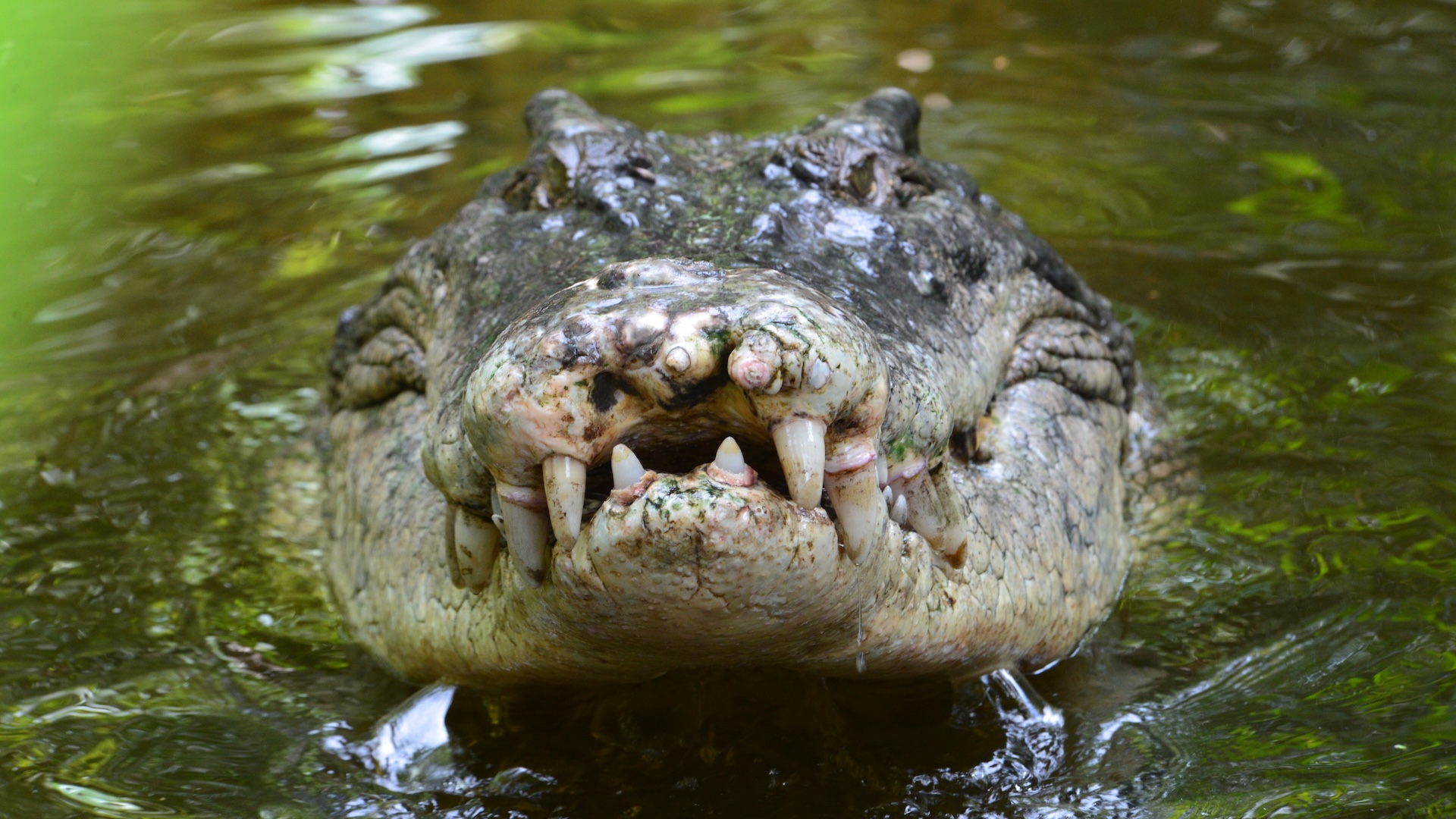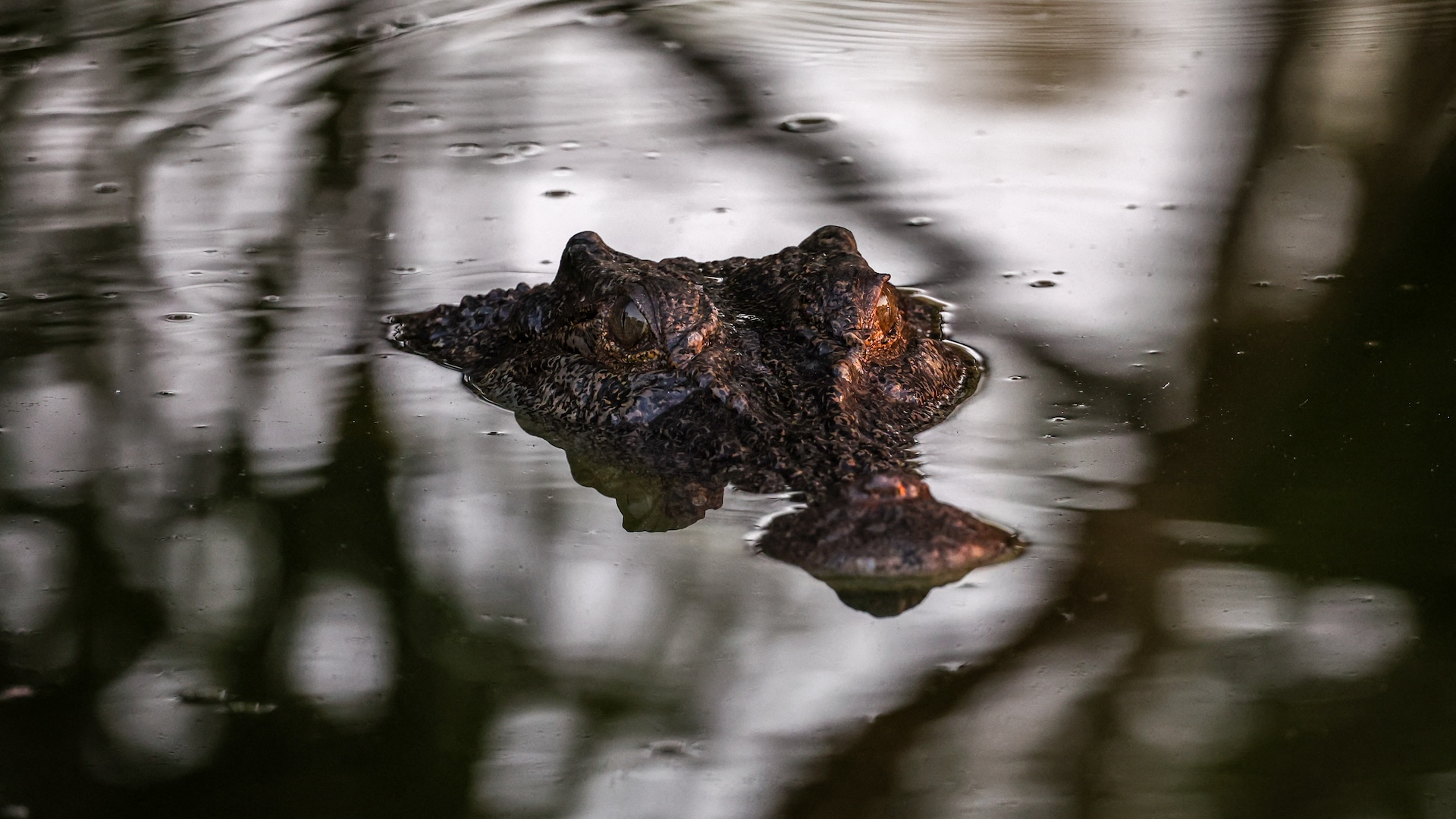Crocodile 'fingerprints' may reveal Australia's deadly, hidden predators
Crocodile attacks in Australia have risen since conservation measures helped their numbers skyrocket. Now, scientists are harnessing their environmental DNA to find these predators before they strike.

Australia has a crocodile problem. In the last two decades, attacks have risen sharply after the population exploded. Along with safety messaging, government officials are increasing the number of permitted crocodile kills, but experts say the move isn't likely to work given how mobile crocodiles are — kill one, and another will immediately move into its territory.
But a new, stealthy way of preventing attacks may be on the horizon. The tool involves using the genetic fingerprints of crocodiles to identify areas where these predators are present. By harnessing environmental DNA (eDNA), wildlife officials could test waterways and warn swimmers, boaters and campers to avoid areas where crocodiles are, or have recently been.
The croc problem is partly the result of one of conservation's greatest success stories. In the early 20th century, thanks to overhunting, the Australian crocodile population plummeted to around 3,000. After protections were introduced in the 1970s, the population surged, and now an estimated 100,000 live in waterways across the country.
Because of this rise, both crocodile attacks and retaliatory attacks by humans are increasing. In the latest incident, on Aug. 3, 40-year-old David Hogbin fell into the Annan River in Queensland and was killed by a 16-foot-long (5 meters) saltwater crocodile (Crocodylus porosus), which was later killed by wildlife officials. And in 2023, a 13-foot (4 m) crocodile was found beheaded on a beach. A few months later, a 40-year-old female croc was also found dead, having been butchered with just her head and spine remaining.
One reason it's hard for people to avoid croc attacks is that they are some of the world's ultimate ambush predators. They can sit completely still underwater for up to eight hours, waiting for unsuspecting prey to pass by before they strike. From the surface, the water may seem croc-free, but people should "assume crocodiles are present in all waterways," according to advice from the Northern Territory Government.
So researchers are developing tests that will show where crocodiles are — without ever needing to see them.
Sign up for the Live Science daily newsletter now
Get the world’s most fascinating discoveries delivered straight to your inbox.
"Environmental DNA (eDNA) relies on detecting trace amounts of DNA that all living organisms leave behind … things like hair, skin cells, feces or urine," Elise Furlan, a molecular ecologist with the University of Canberra (UC) who works on the program, told Live Science in an email.

To test for eDNA, the team collects water samples and filters them. The scientists then extract any detectable DNA in the lab, amplifying it and searching for evidence of croc DNA, Furlan said.
To check the test's accuracy, the team searched for eDNA in water from crocodile-holding ponds at a Queensland Department of Environment, Science and Innovation (DESI) facility and compared the results with those from water that never housed crocodiles. After the crocodiles were removed from the pond, they tested the water to establish how quickly the DNA degrades, according to a statement from the DESI. This should reveal how long a crocodile needs to be in a body of water for it to be picked up by the tests, and how long after it has left the area its traces remain.
The program is in its early stages. Right now, samples need to be analyzed in the lab, but the researchers hope that as the work progresses, they can develop a spot-test to detect crocodiles in real time, Furlan said. The tests are not 100% accurate and there's a risk of false negative detection, but it's still likely to be better than traditional detection methods, Furlan said..
The hope is eDNA tests could be used in conjunction with other attack-prevention tools, such as public safety messaging.
In future work, the team plans to sample rivers and other water bodies in Queensland where crocodiles are present to establish the tests are effective in real-world environments.
"This research absolutely has the potential to have a very practical application," Furlan said.

Hannah Osborne is the planet Earth and animals editor at Live Science. Prior to Live Science, she worked for several years at Newsweek as the science editor. Before this she was science editor at International Business Times U.K. Hannah holds a master's in journalism from Goldsmith's, University of London.










